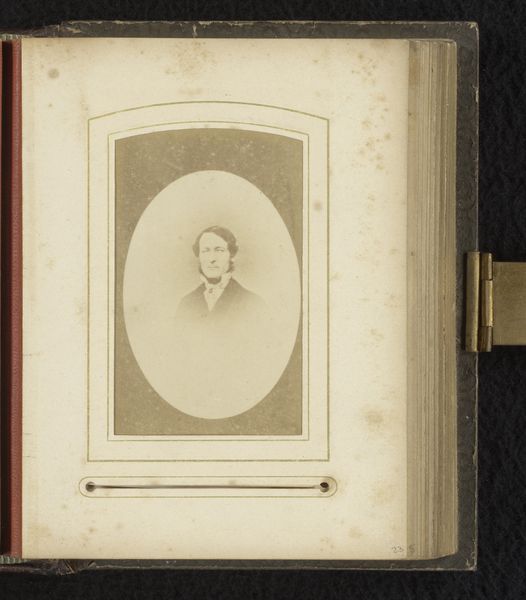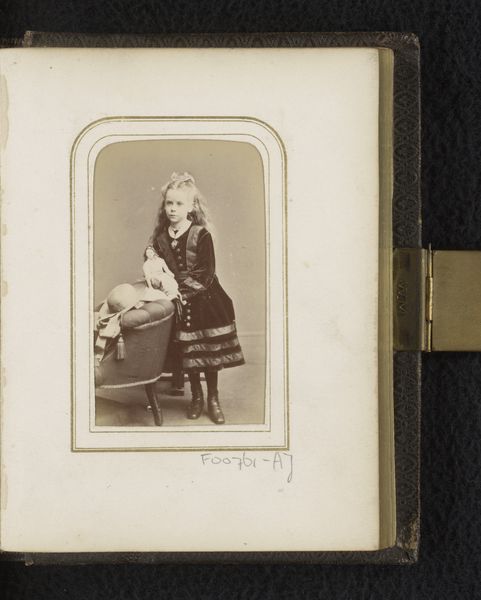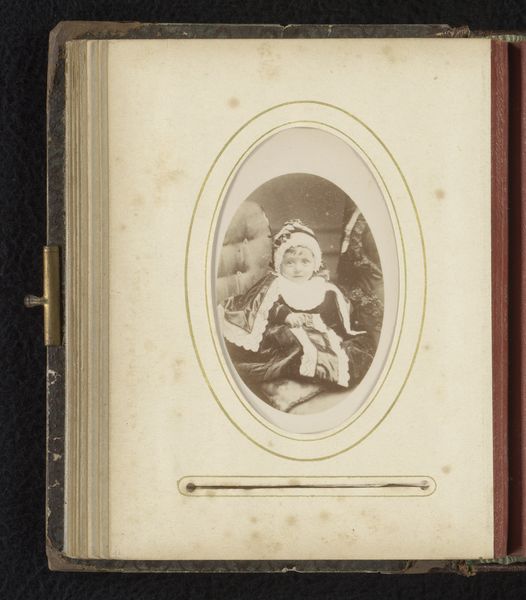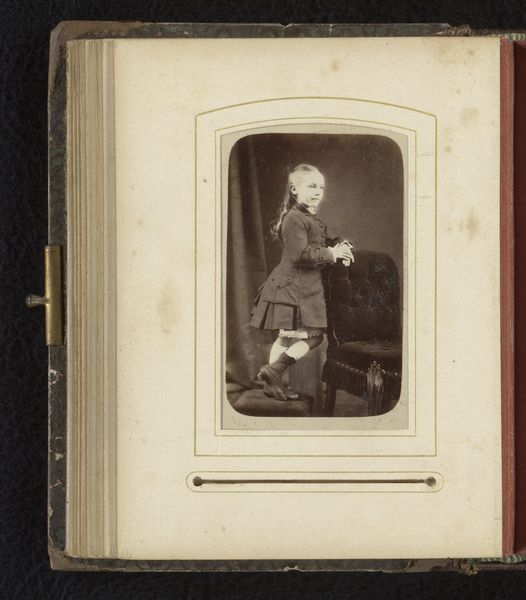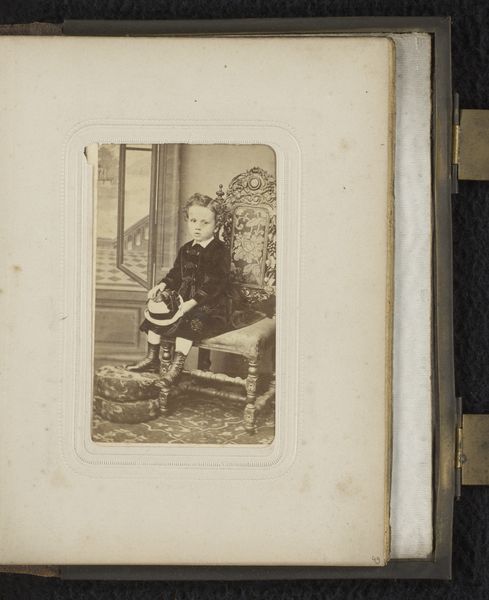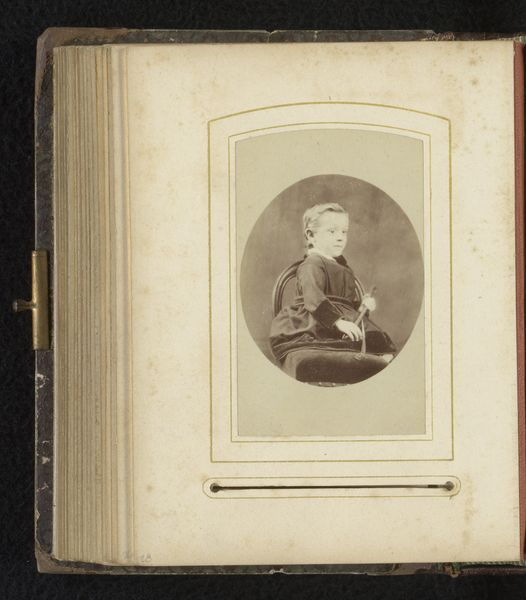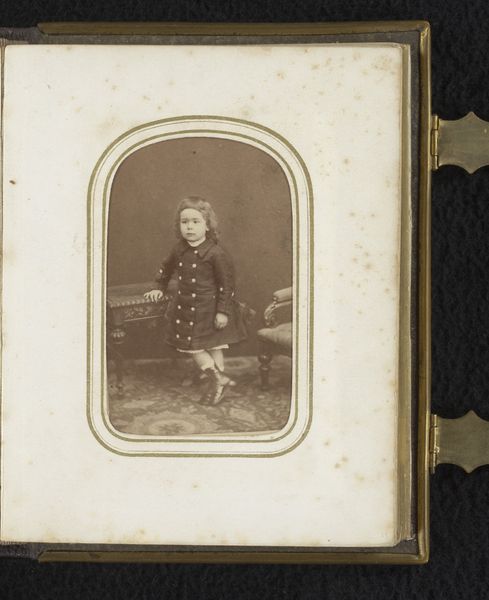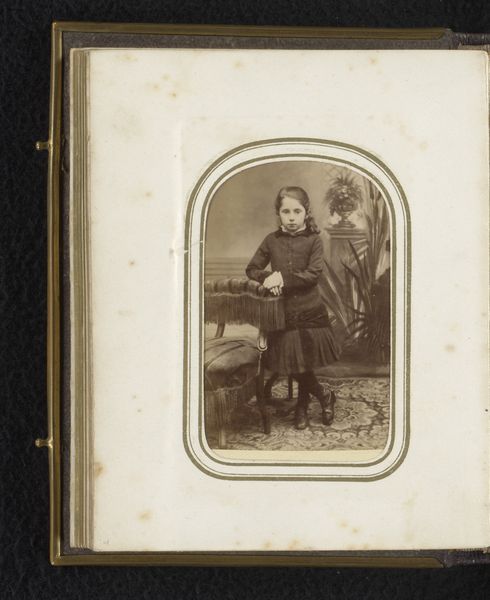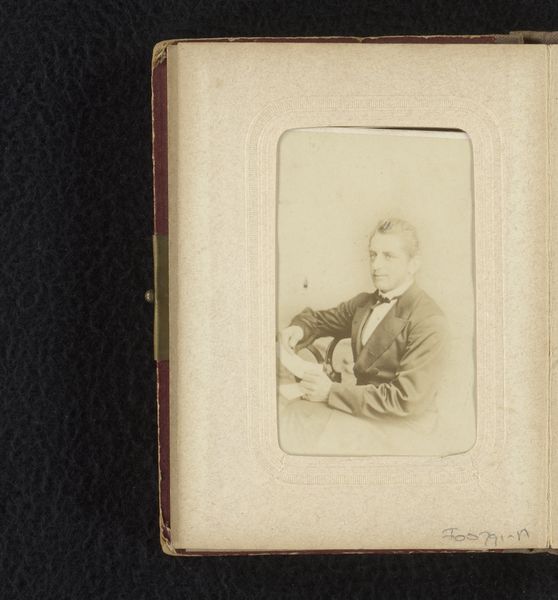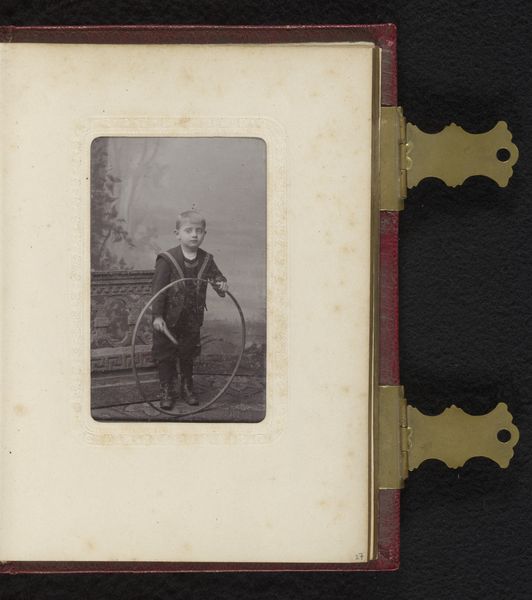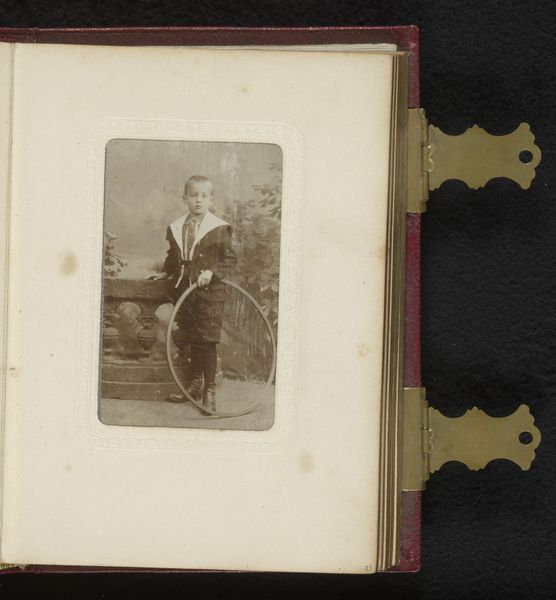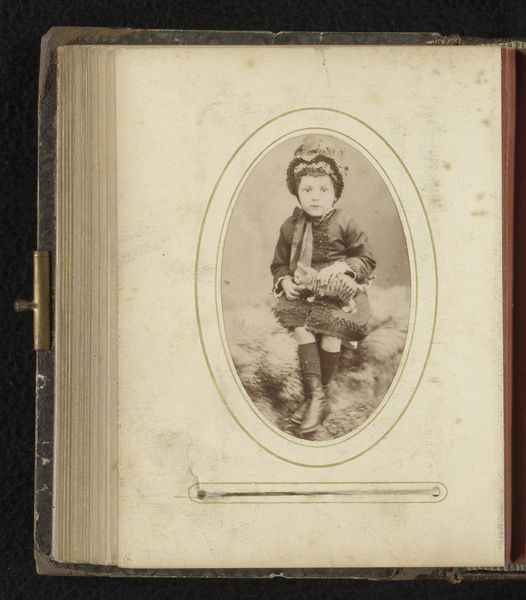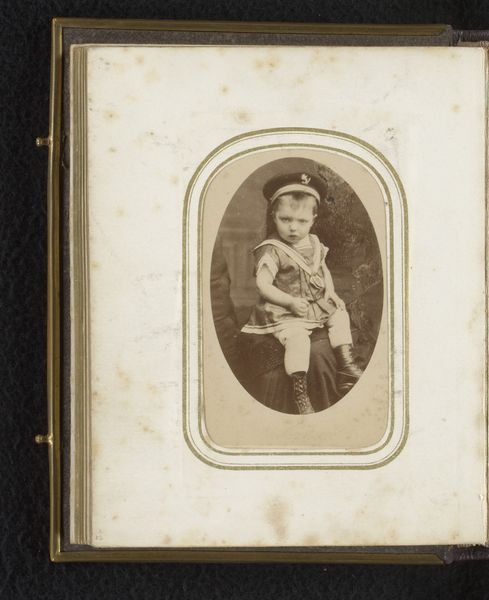
photography, gelatin-silver-print
#
portrait
#
still-life-photography
#
photography
#
gelatin-silver-print
#
genre-painting
#
realism
Dimensions: height 105 mm, width 64 mm
Copyright: Rijks Museum: Open Domain
Curator: Here we have "Portret van een meisje met een zwarte kat," a gelatin-silver print, dating from around 1880 to 1920, attributed to F. Taylor. Editor: There's a compelling somber quality about it. The contrast between the child’s stern expression and the soft dark fur of the cat she cradles is striking. Curator: Indeed. Let's consider the composition: the oval format isolates the figure, focusing attention on the child and the pet. This type of portrait, rendered in photography, mirrors a fascination with realism prevalent during this era. The simplicity belies its construction, which operates almost sculpturally, doesn’t it? Editor: Precisely. The production process is fascinating. Consider the chemistry involved in creating a gelatin-silver print and the labor required for photographic portraits at this time. They are acts of immense, almost alchemical making that made a very specific kind of likeness possible. How would the family’s socioeconomic class influence this kind of portrait? It couldn't have been inexpensive to create. Curator: An intriguing line of inquiry. Semiotically, her sailor-style dress reads as symbolic of maritime travel or leisure for upper-class Victorians and Edwardians. Even in the photograph's limited palette, we can appreciate Taylor's command of light and shadow. How the light catches the stark white of the dress against the dark cat is a master stroke. Editor: Right. So the print itself is embedded in a wider history of material culture and manufacturing, reflecting a growing industry—both in the mass production of clothing, and in making cameras and photographic printing available to the upper classes. What’s absent is more significant to me, too. Curator: So the absent stories contribute? An interesting lens through which to examine Taylor’s work, definitely adding depth and complexity to how we receive it. Editor: Yes, definitely, it shifts our viewing and encourages contemplation about materiality, class, and social realities. Curator: Thank you for that profound perspective. It's been enriching to analyze both the artistry and the socio-economic implications inherent within this powerful piece.
Comments
No comments
Be the first to comment and join the conversation on the ultimate creative platform.

